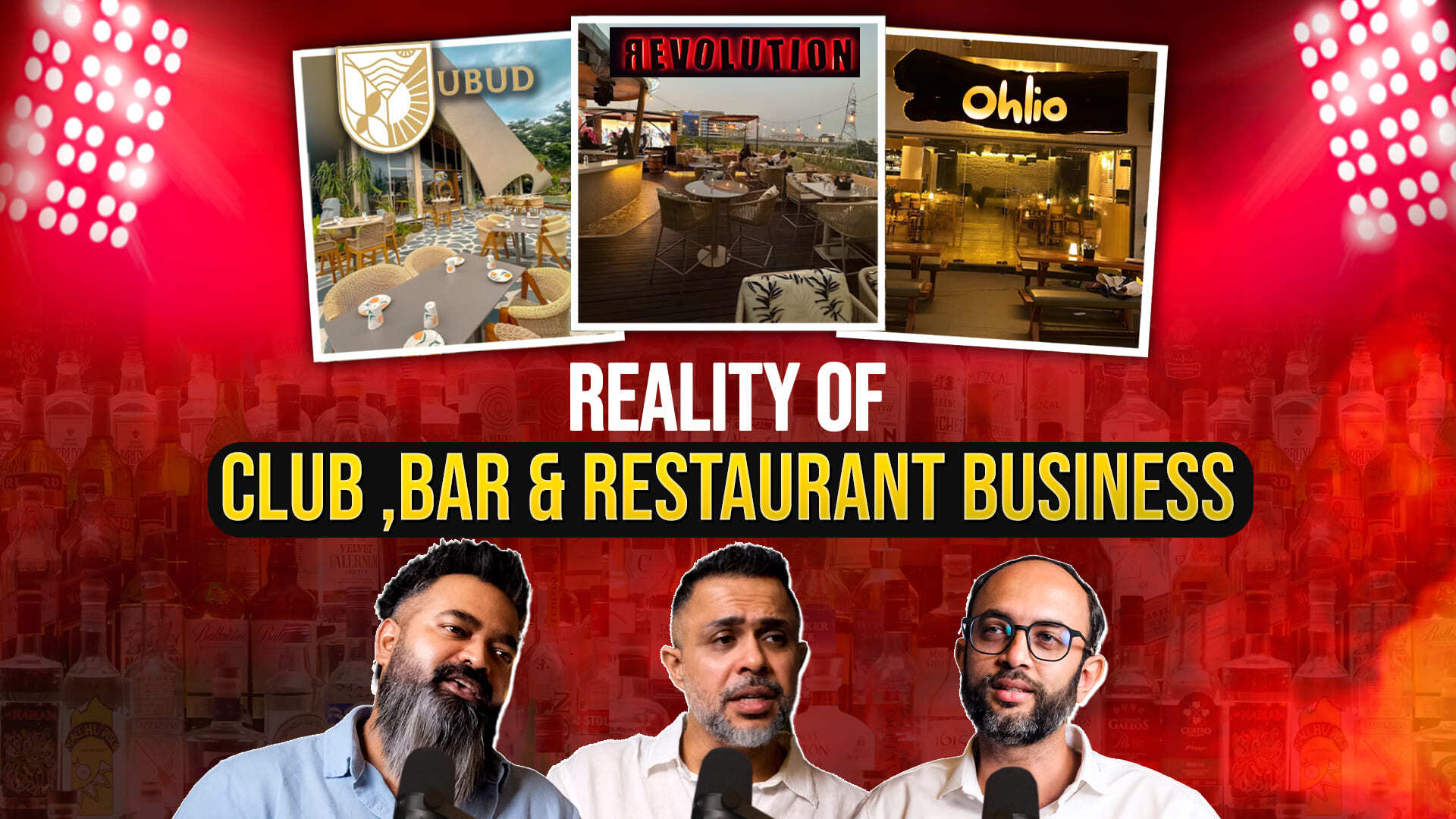How to Build a Food & Nightlife Brand in India ft. Deepesh & Shrikant

Creative Job Platform - Find Jobs

Follow Us
Download Diffr App
Introduction: The Changing Culture of Food & Nightlife in India
In this episode of our podcast, we sat down with Deepesh and Shrikant, the dynamic duo behind some of Indore’s most iconic restaurant and nightlife spots — Ubud, Boho, Olio, Revolution, and House of Malts. The conversation unpacked the rise of experiential dining, how Indore’s nightlife has evolved, and why food businesses today are more about crafting a memory than just serving a meal.
Starting from Scratch: Why Deepesh & Shrikant Chose the Food Business
Without any industry background, both founders jumped into the restaurant business purely driven by curiosity, passion for food, and a vision for creating unique spaces. They started early, believing that the sooner you absorb the ecosystem, the better your decision-making becomes.
They stressed that the ideal capital to open a nightlife-oriented restaurant in Indore could range from ₹2.5 to ₹3 crore, depending on the property size and concept.
Unique Concept Planning: Why Copy-Paste Doesn’t Work
A recurring theme in the podcast was the importance of concept innovation. Deepesh and Shrikant believe that cut-copy-paste models fail in evolving markets like Indore. From English live band setups to fusion gourmet menus, every outlet under their umbrella offers a distinct vibe.
Experimentation with concepts and music curation has been a key differentiator, helping them carve niches for each venue.
Profit Margins & Financial Planning in Restaurant Business
They revealed that a healthy profit margin in the food and beverage industry hovers around 22-27% after factoring in overheads like rent, salaries, and licensing. For nightlife businesses, calculating footfall on weekdays versus weekends, average per person spends (APC), and seating capacity utilization is critical.
You Might be Interested
-
The Truth About Serums: Choosing the Right One for Your Skin
-
Keshar Farming: Growing Kesar at Home, The Future of Urban Saffron Farming
-
Deval Metal Art: Turning Scrap into Sculpture. The Art, Process, and Business of Metal Creativity
-
The Science of Healthy, Glowing Skin: Expert Insights from Dr. Swati
-
Chef Lata Tandon: The Ayurvedic Science of Food, Cooking Discipline & Timeless Kitchen Frameworks
The Licensing Maze: What It Really Takes to Open a Bar
Getting a liquor license in India isn’t simple. The duo outlined a multi-department clearance process, covering fire exits, commercial land use approvals, washroom facilities, parking, and safety compliances. On average, it takes 7-8 departmental permissions and months of groundwork before a license is granted.
The Role of Social Media Marketing in Food Business
Both founders acknowledged the transformative role of social media in restaurant marketing today. They moved from traditional food photography to human-centered video reels, customer testimonials, and behind-the-scenes stories.
They emphasized spending an average of ₹30,000 per outlet monthly on Meta Ads (Facebook & Instagram) and strategically timing campaigns around weekends and local events.
Managing Vendors, Staff & Operations
With over 400+ staff and 35-40 vendors, the challenge lies in maintaining consistency in quality and staff motivation. The founders prefer a core team migration model — transferring experienced staff from one outlet to new ones — ensuring operational culture and quality benchmarks remain intact.
AI & Tech-Driven Operations
Interestingly, both entrepreneurs are increasingly integrating AI-based operational tools — from kitchen order tracking to SOP-driven housekeeping monitoring — to enhance efficiency and minimize human error in daily workflows.
Conclusion: Key Learnings for Budding Food Entrepreneurs
If you’re planning to enter the food business in India, here’s what Deepesh and Shrikant suggest:
Start early — absorb as much ground-level experience as possible
Focus on concept differentiation — don’t follow the herd
Plan your finances and overheads meticulously
Prioritize experiential marketing over discounts
Stay hands-on with numbers, quality, and vendor relationships
Be ready to adapt your marketing strategies rapidly



